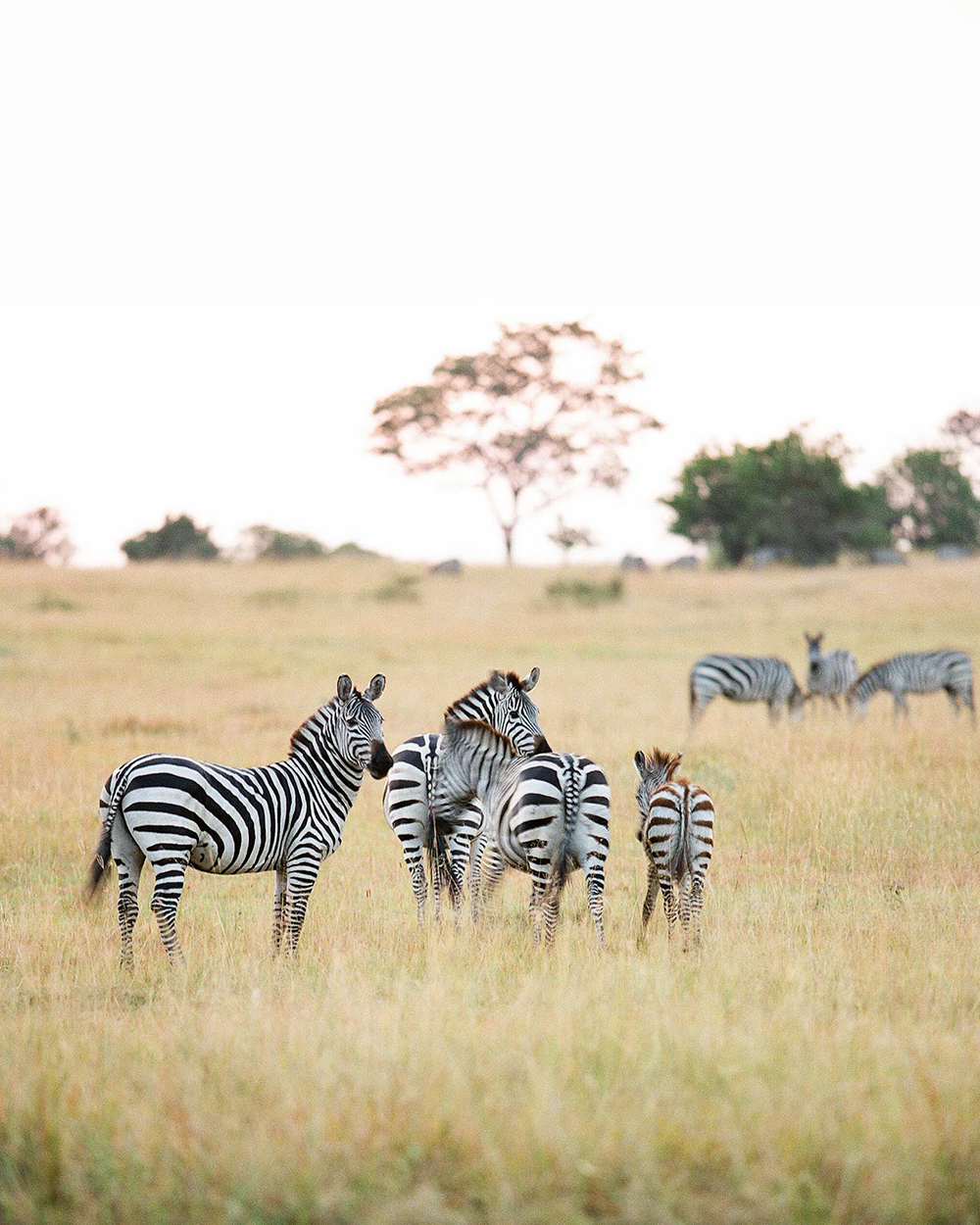
Endless Plains, Timeless Migrations – The Serengeti is synonymous with vast landscapes and the dramatic spectacle of the annual wildebeest migration. This iconic savannah offers unparalleled safari adventures, with its rich biodiversity and majestic settings under the vast African sky.
Start PlanningRanges from 920 meters (3,018 feet) to 1,850 meters (6,070 feet) above sea level
Temperatures averaging between 15°C (59°F) and 25°C (77°F)
14,750 square kilometers (5,700 square miles)
Swahili is the official language, but English is widely spoken in tourist areas and hotels.
The Tanzanian Shilling (TZS) is the local currency, but US dollars are widely accepted in tourist areas.
There are several airstrips within the Serengeti that serve charter flights from major cities like Arusha, Dar es Salaam, and Kilimanjaro.
Peak Season: The dry months from June to October are the most popular for visiting, as the weather is favorable for wildlife viewing and the Great Migration is often in full swing in the northern Serengeti
Off-Peak Season: The wet season from November to May offers lush scenery and excellent birdwatching opportunities, with fewer tourists and potentially lower prices.
The Great Migration: Witness one of the world's most spectacular natural events as millions of wildebeest and zebras make their annual migration across the plains.
Predator Viewing: The Serengeti is renowned for its large populations of lions, cheetahs, and leopards, making it one of the best places in Africa to observe these animals in their natural habitat.
Kopjes: These rocky outcroppings are not only scenic but also home to a variety of wildlife, offering close-up views of creatures like lions and cheetahs who use them as lookout points.
Sun protection and hydration are key. Being located on the equator means the sun is significantly harsher than in places like Europe.
Take extra care on safari and beach excursions.
Most resorts offer wireless internet connections, as do airports and even airstrips in national parks. For maximum connectivity throughout your trip, consider purchasing a local SIM card at the international airport upon arrival.
Vodacom and Airtel offer the best coverage in Tanzania, especially in national parks and rural areas.
A tourist visa is required for most tourists visiting Tanzania, which can be obtained upon arrival or preferably beforehand via the online e-visa system.
A yellow fever vaccination is required if arriving from a country with risk of Yellow Fever.
Central Serengeti (Seronera Valley): Abundant year-round wildlife, famous for the tree-climbing lions.
Northern Serengeti: Great Migration river crossings at Mara River (July to October).
Western Corridor: Grumeti River crossings, large crocodile populations.
Southern Serengeti (Ndutu Region): Calving season (January to March), rich predator activity.
Eastern Serengeti: Remote areas, cheetahs, large herds of herbivores.
For a comfortable safari in Serengeti, consider packing:
Lightweight, Neutral-Colored Clothing: Ideal for game drives and bush walks. Avoid bright colors that can attract insects or disturb wildlife.
Comfortable Walking Shoes: Suitable for walking safaris and exploring around the camp.
Sun Protection: Bring sunscreen, a hat, and sunglasses to protect against the strong sun.
Binoculars and Camera: Essential for wildlife viewing and capturing the breathtaking scenery.
Warm Layers: Mornings and evenings can be cool, so pack a warm jacket or sweater.
It's important to carry enough cash, as many lodges and camps do not have facilities for tipping with credit cards and might not have enough cash for change.
A common practice is to tip $10-$15 per guest, per day. This usually goes into a communal tip box and is shared among all the lodge or camp staff, including those working behind the scenes.
For individuals who guide you through your safari (guides and trackers), a typical tip is about $10-$20 per person, per day.
At restaurants, tipping about 10% of the bill is customary.
Always ensure that your tips are given as a token of appreciation for good service, rather than out of obligation.
Drones are prohibited unless you have obtained a specific permit. Customs conducts scans of all bags upon arrival and will confiscate any drones, holding them until your departure day.